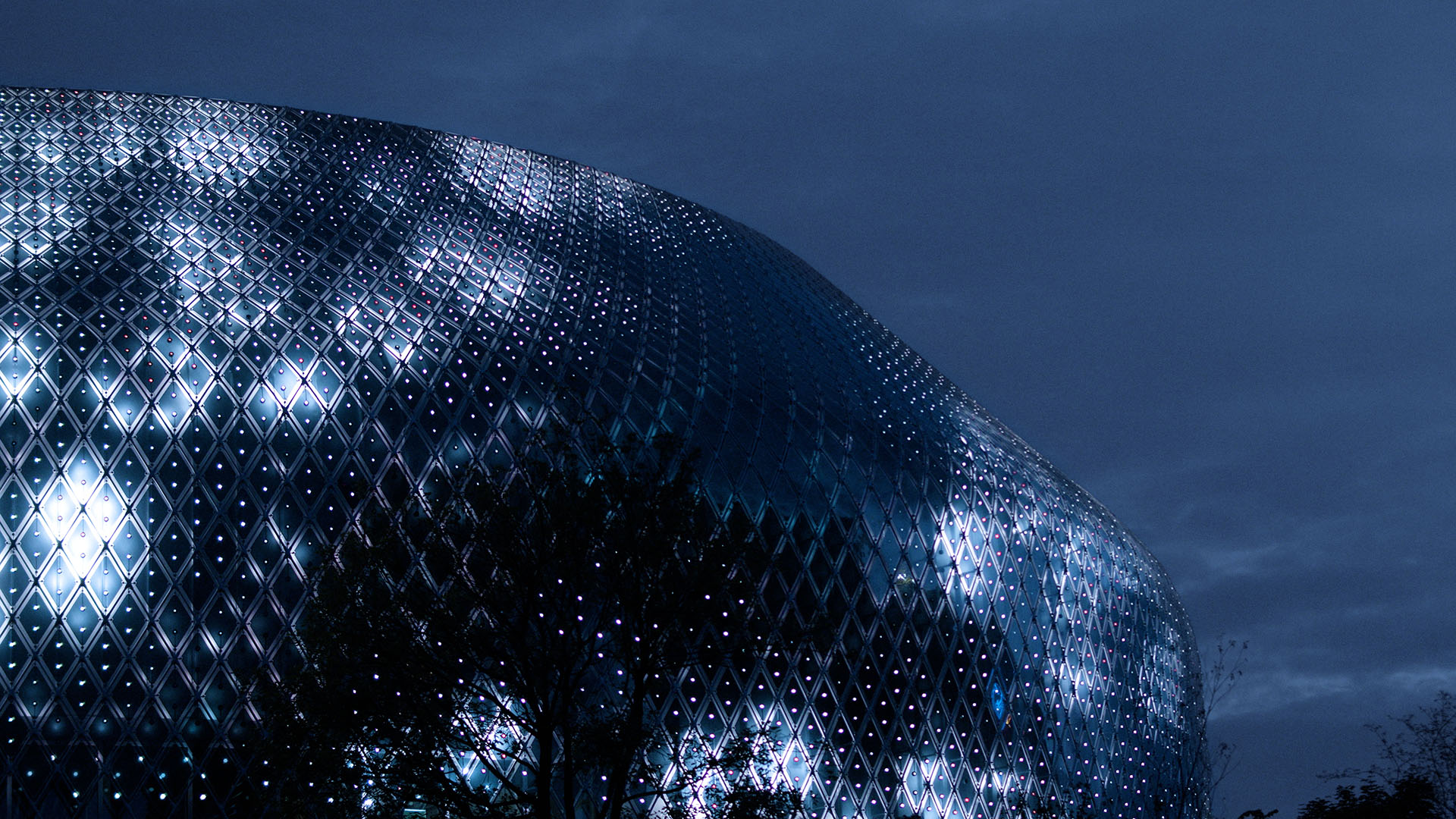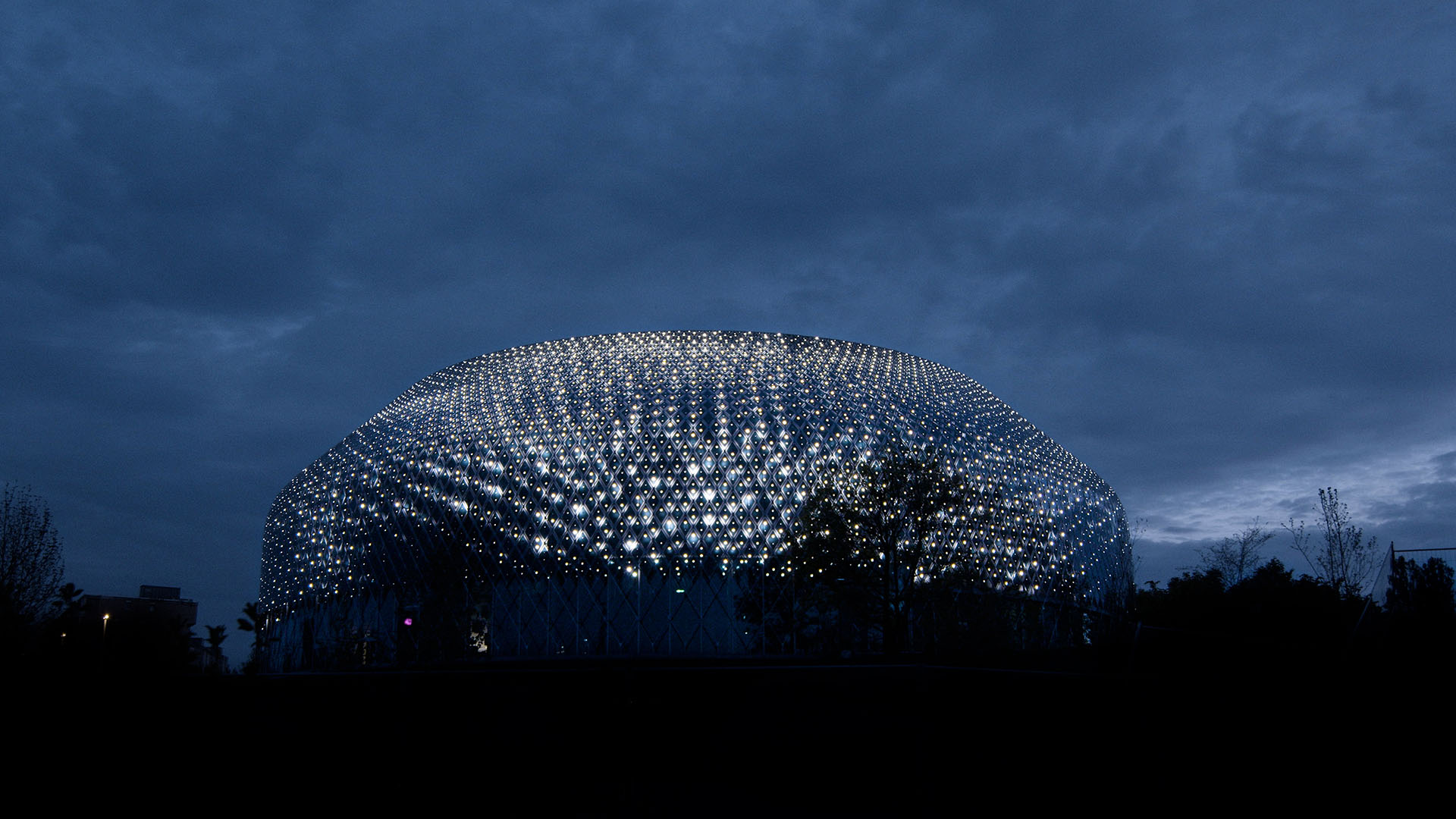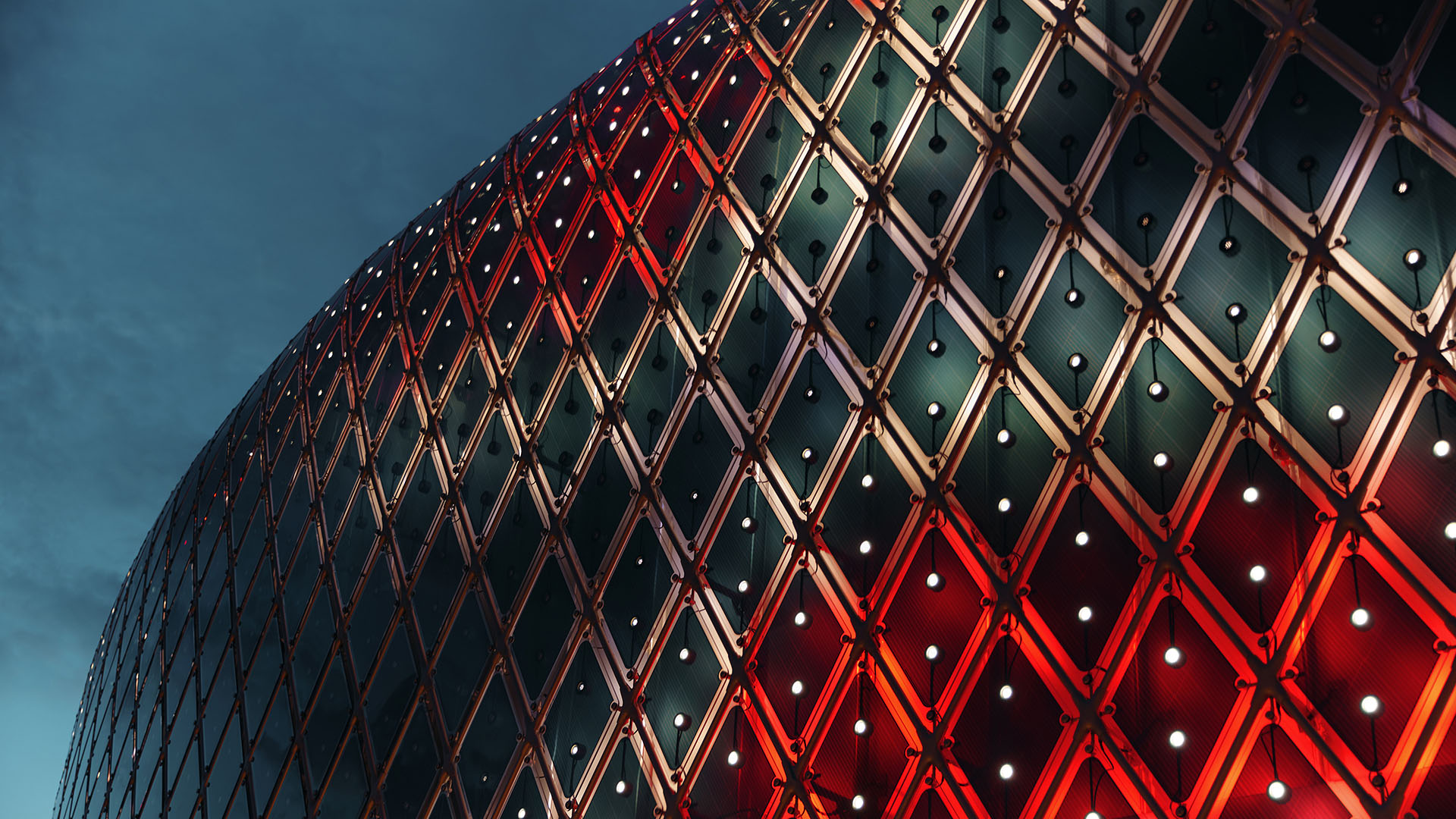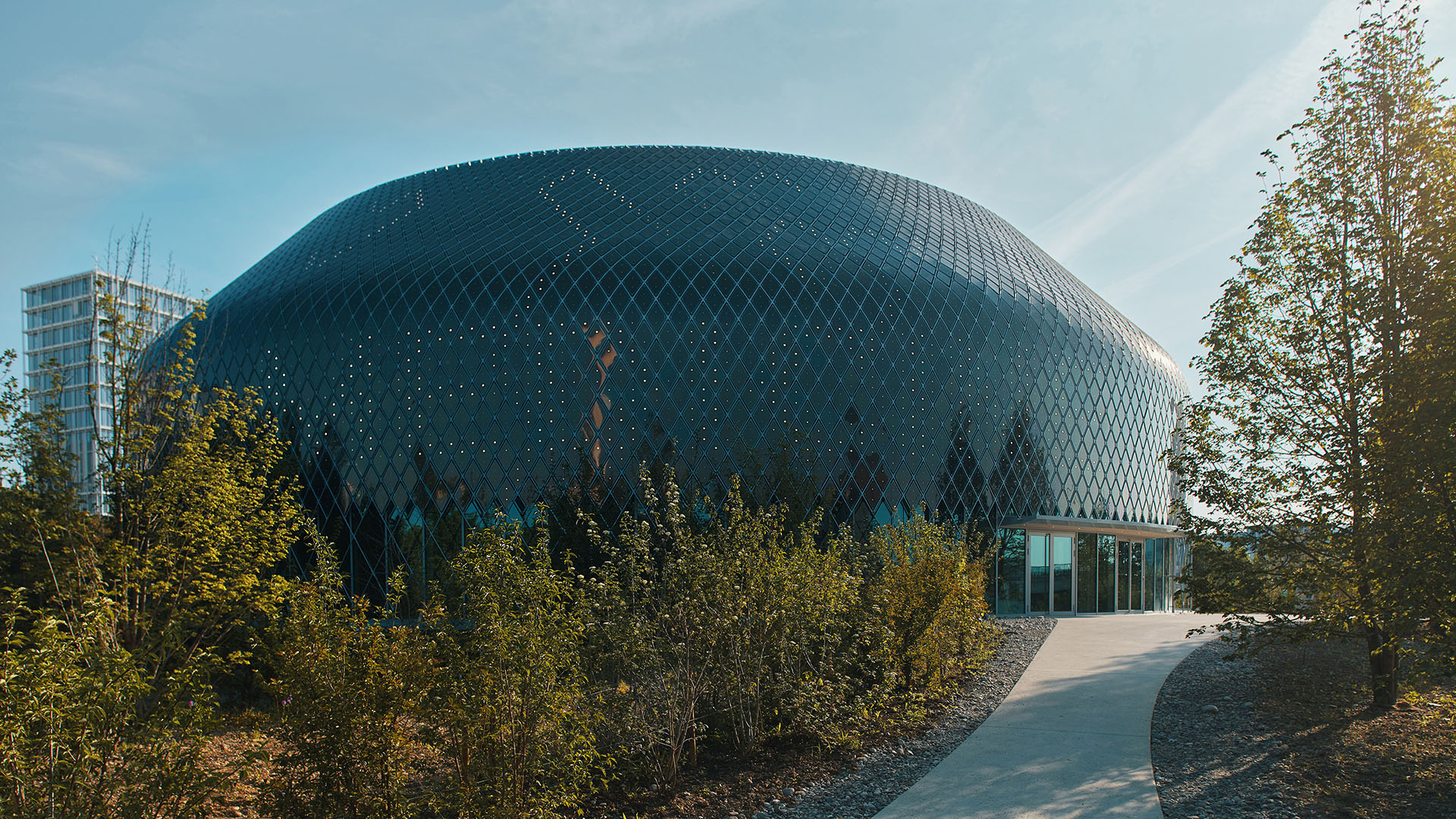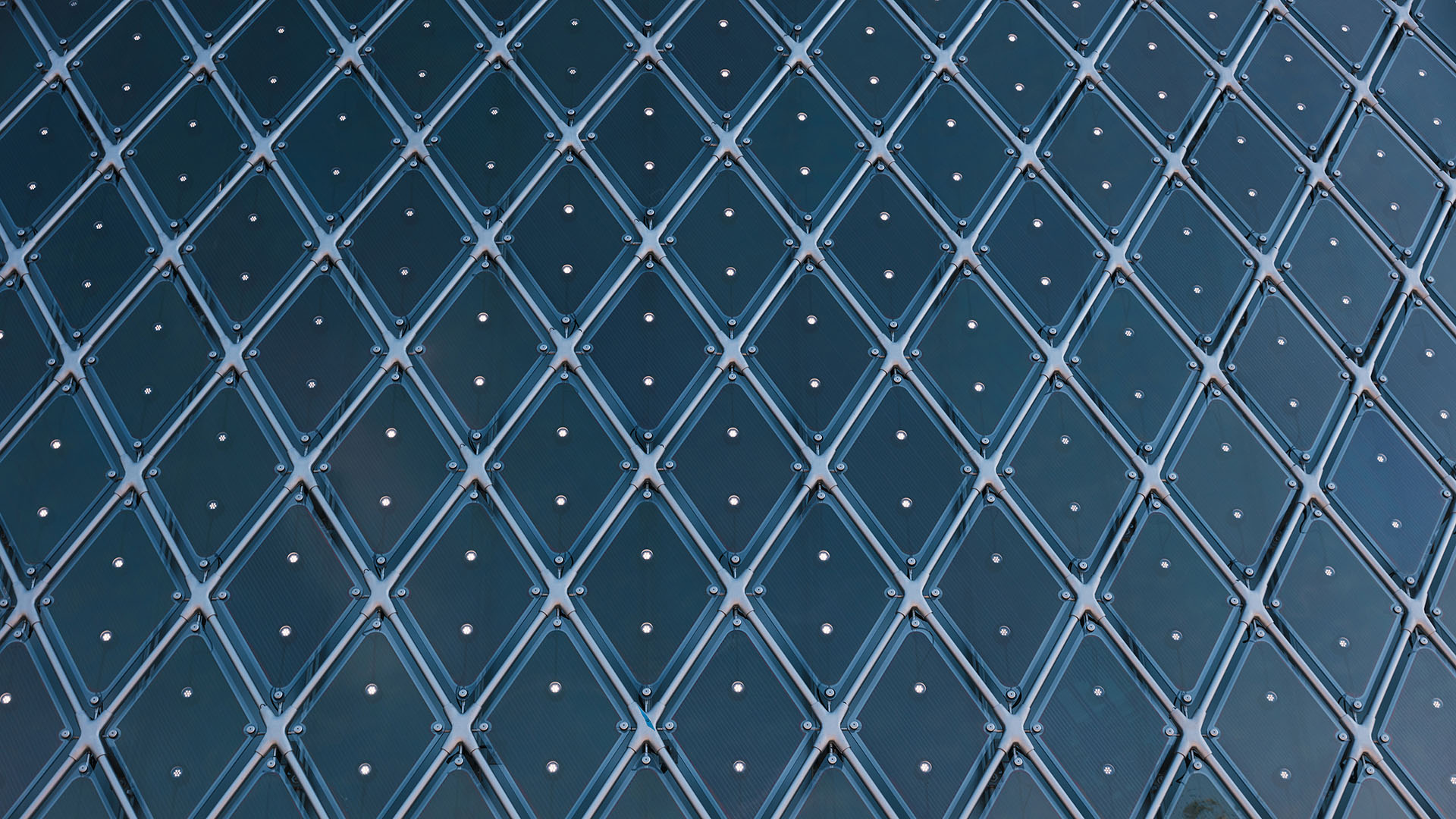Novartis Pavillon – Zero-Energy Media Facade
Where sunlight becomes art: The zero-energy media facade of the Novartis Pavillon combines organic photovoltaics and LEDs to create a communicative skin. It features a total of 10’000 solar modules with 30’000 embedded LEDs and consumes only as much energy as it can produce.
Agency
iart, AMDL Circle, Michele De Lucchi
Practice Area
Client
Novartis
Industry
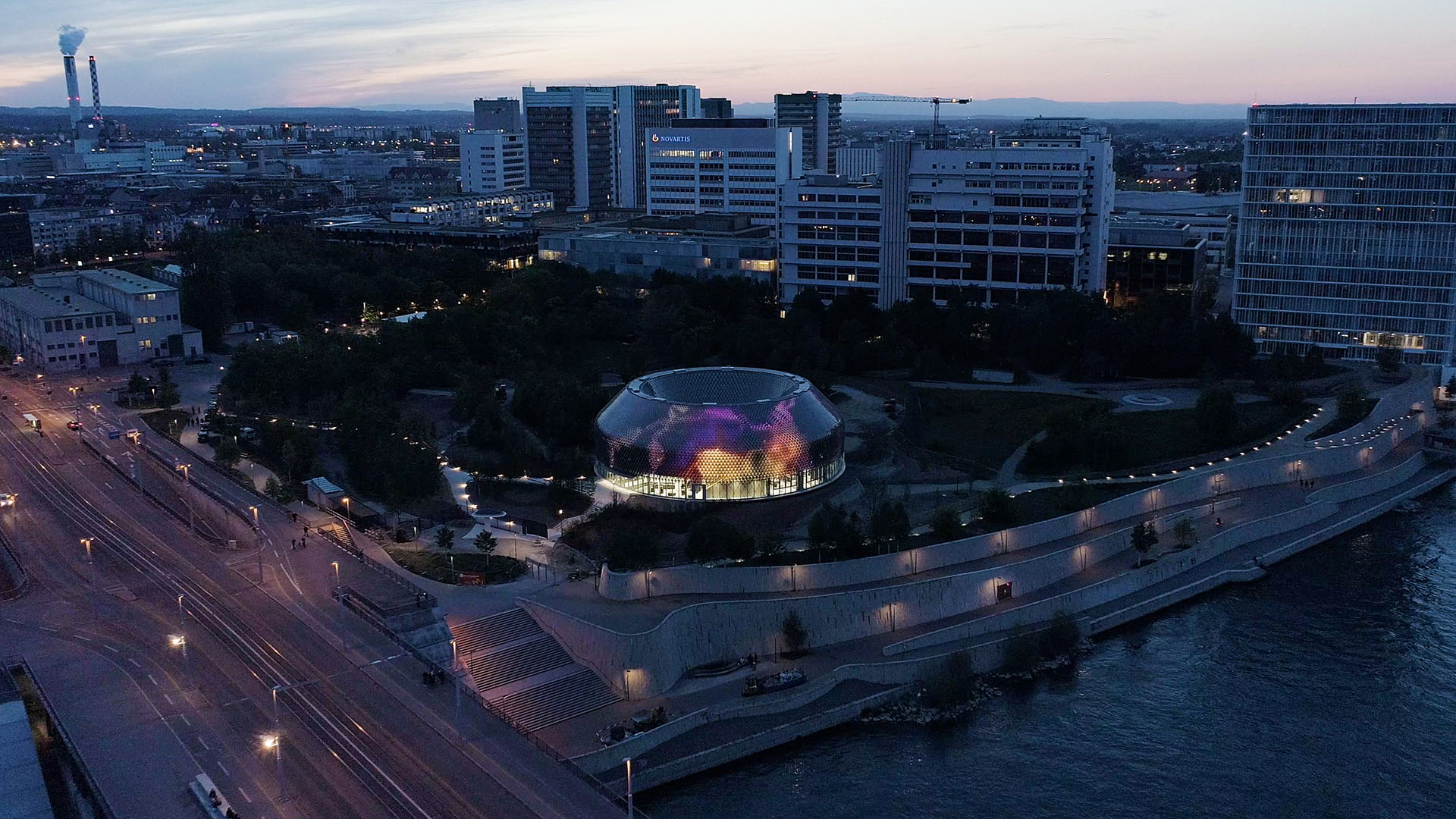
The Challenge
The Novartis Pavillon located in Basel, Switzerland, is a place of encounter and learning about life sciences. It houses “Wonders of Medicine”, a permanent multimedia exhibition, as well as meeting spaces and a café. Our brief was to create a media facade for the circular building.
Project Vision
Our vision was to combine organic photovoltaics and LED technology to create a zero-energy media facade. This means that the total amount of energy consumed by the facade over a year is (at least) equal to the amount of energy it produces itself. The facade is designed to offer Novartis a unique communication medium to enter into a dialogue with the public and with its urban surroundings.
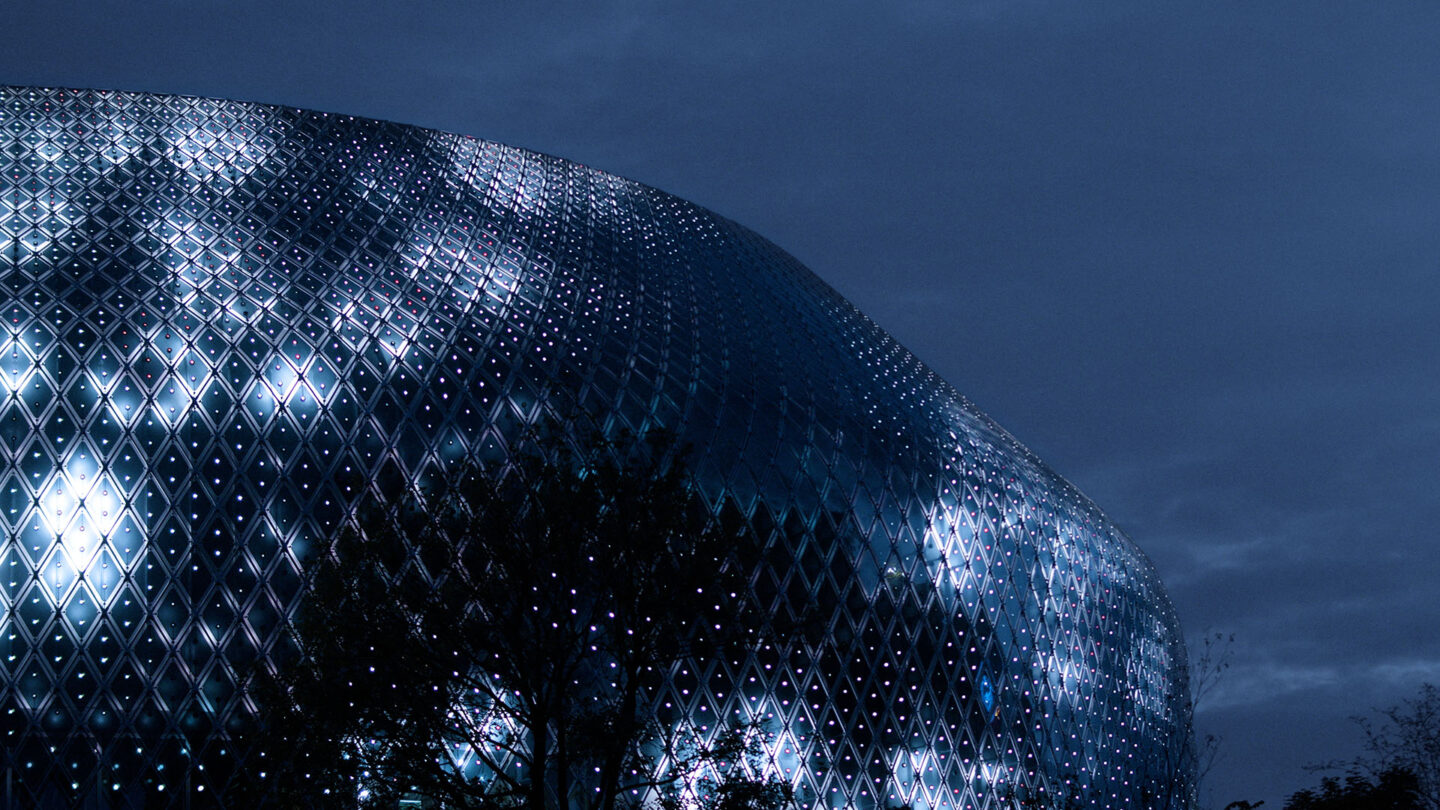
The facade displays digital artworks created by artists in collaboration with scientists.
Laurids Jensen, iart
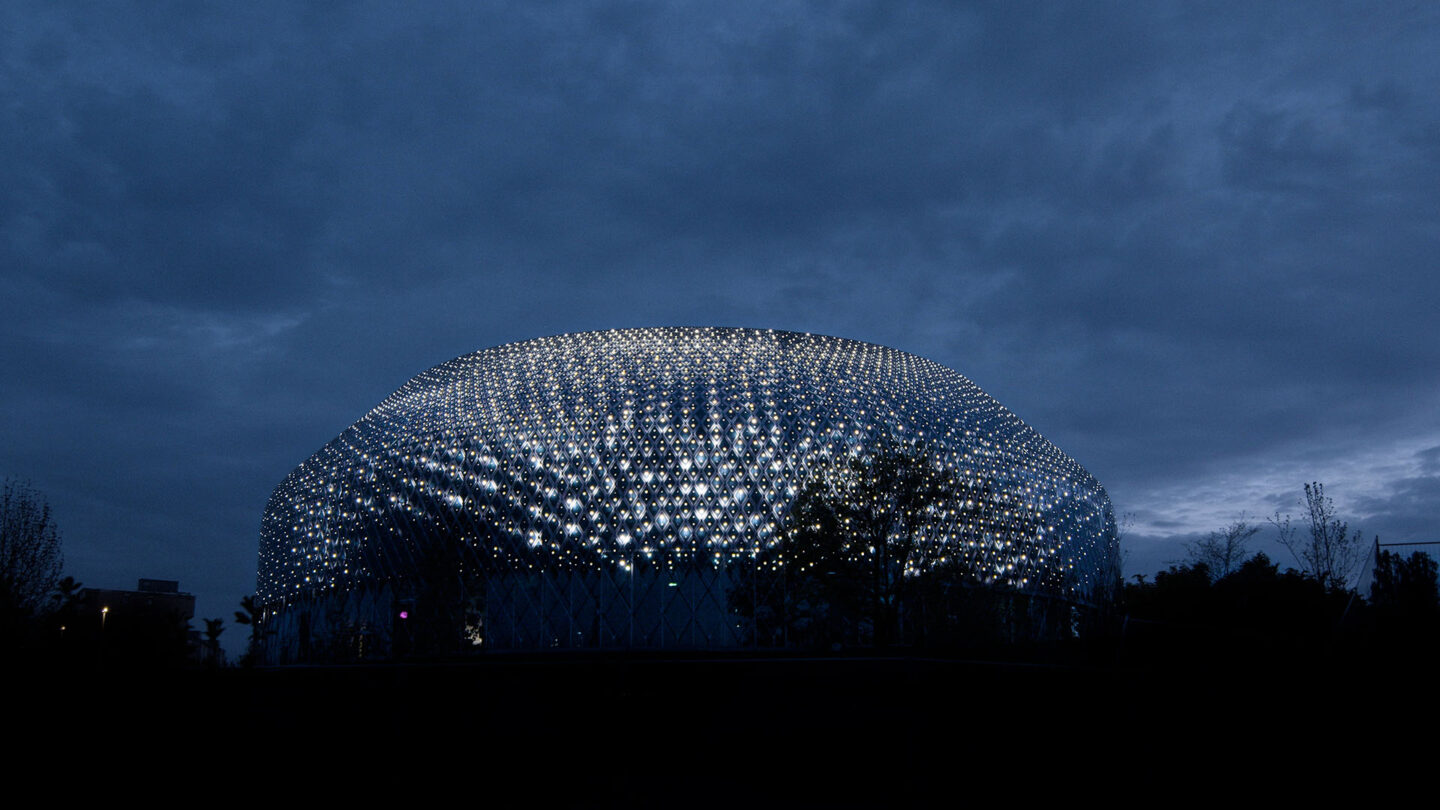
It becomes a communicative skin that acts as an interface between inside and outside, the company and the city, bringing the world of science and medicine closer to the community.
Laurids Jensen, iart
Design + Execution
The project was implemented with an iterative approach. We conducted a series of parametric design studies to find the optimal geometry and graphic design for the facade. Then we moved on to the engineering and built a series of prototypes and test set-ups to validate our solution. We also built a playout system and worked with three international artists, who collaborated with scientists from Novartis to create digital artworks. Finally, the facade was assembled locally in an old Novartis warehouse, which allowed us to keep transportation at a minimum.
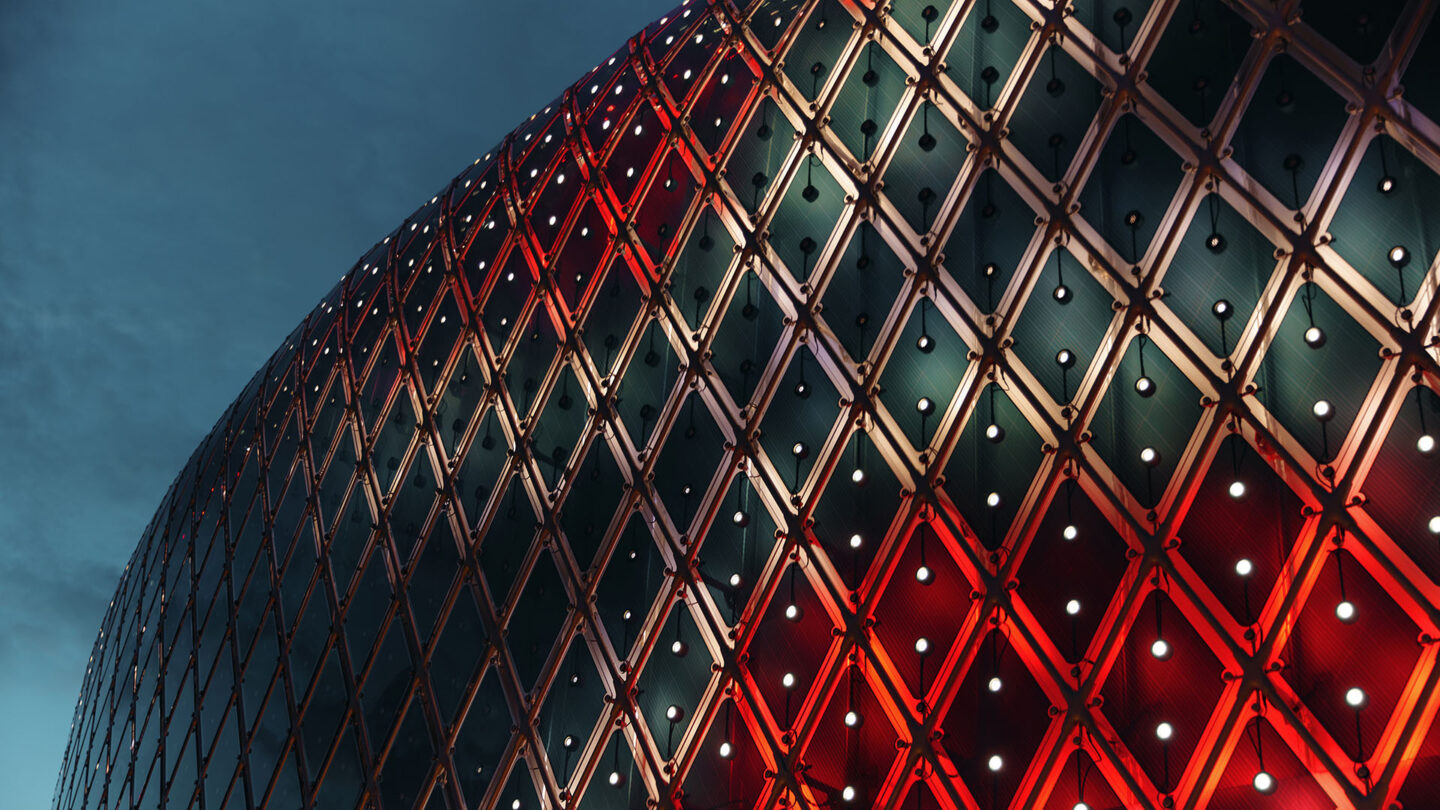
LEDs are embedded into the diamond-shaped solar cells. Their light not only shines away from the building, but also shimmers through the semi-transparent solar cells.
Laurids Jensen, iart
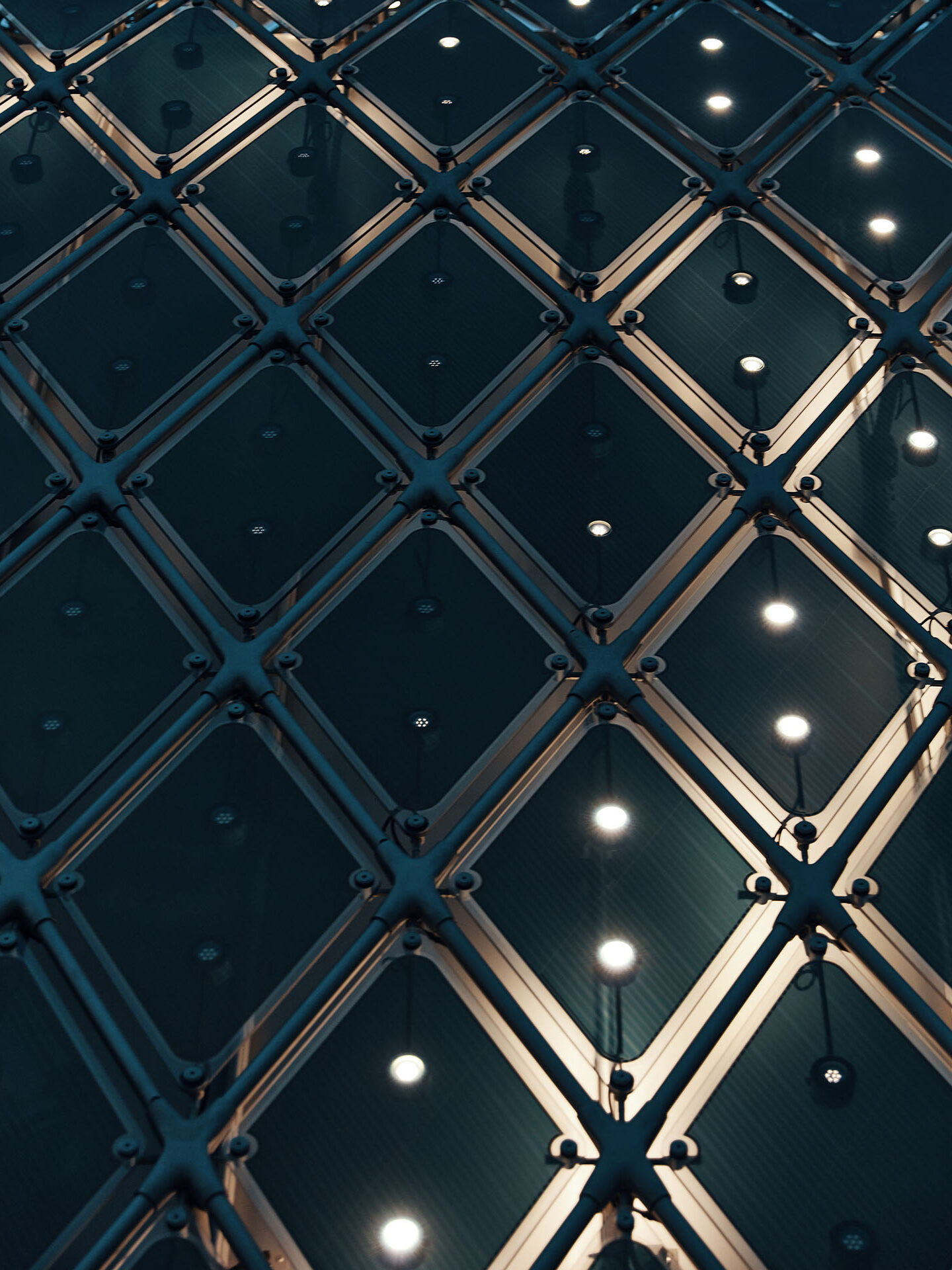
The facade consumes only as much energy as it can produce.
Laurids Jensen, iart
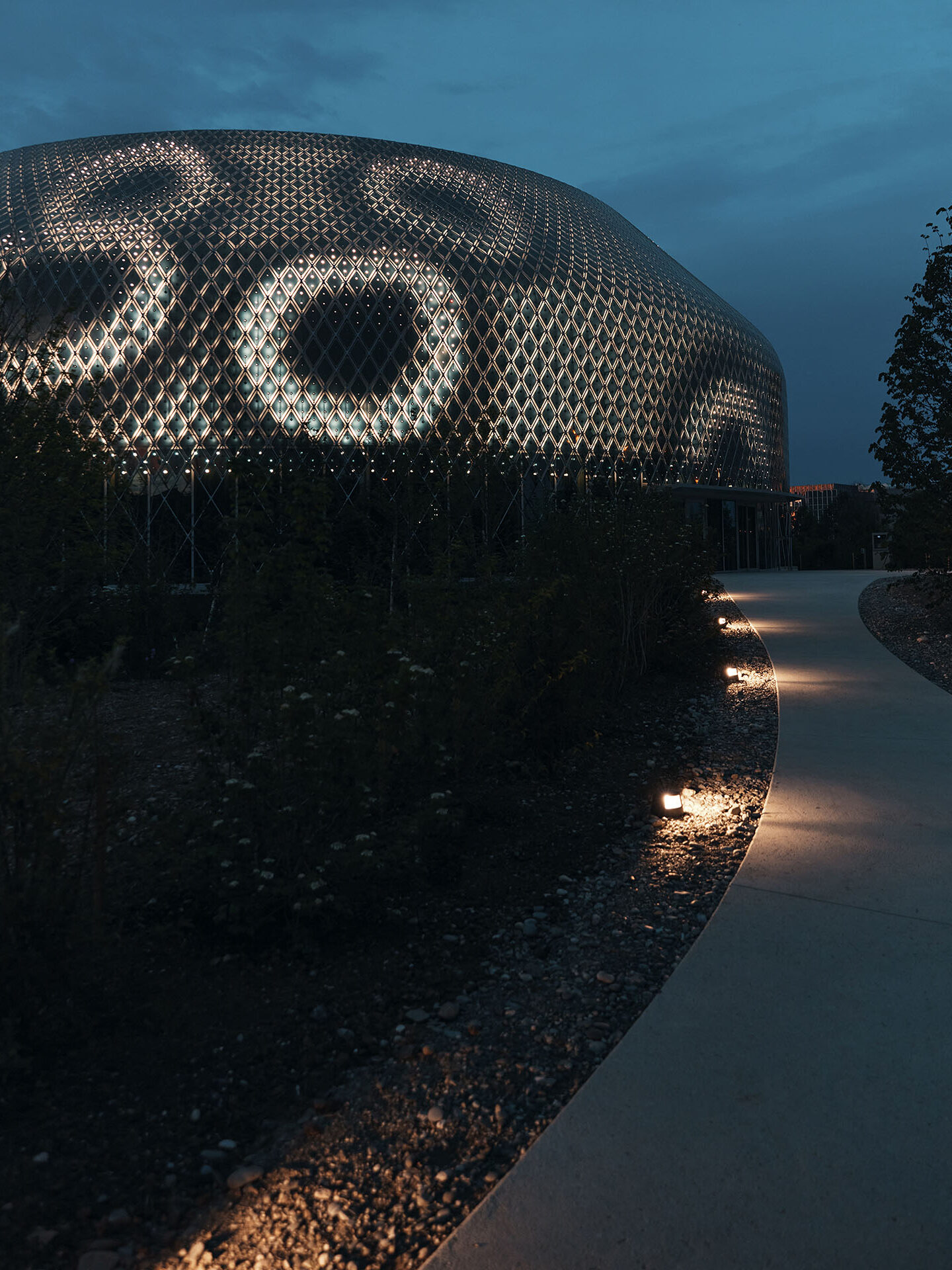
The Novartis Pavillon is located within a park on the Novartis Campus in Basel, Switzerland.
Laurids Jensen, iart
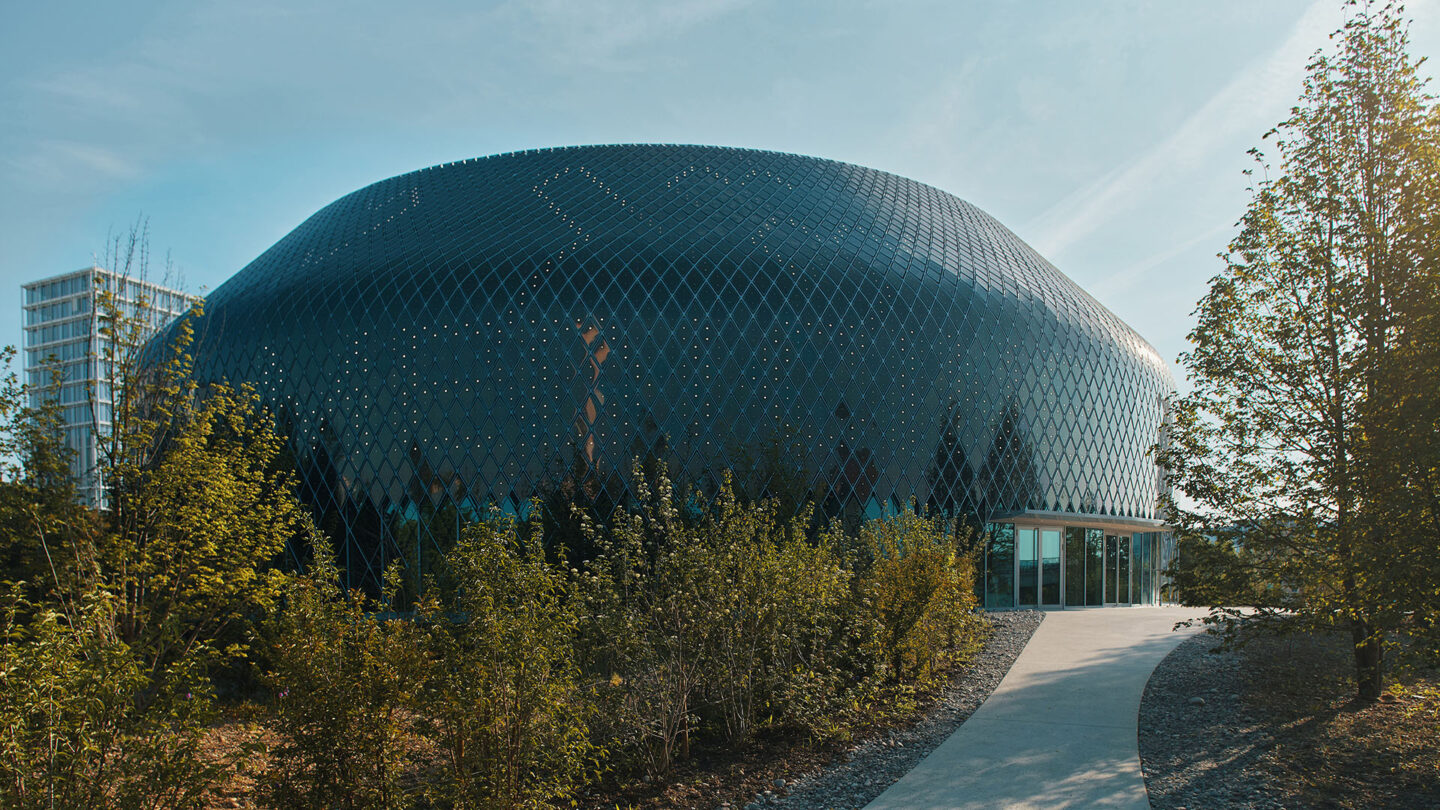
During the day, the facade displays moving text, using only the white LEDs facing away from the building.
Laurids Jensen, iart
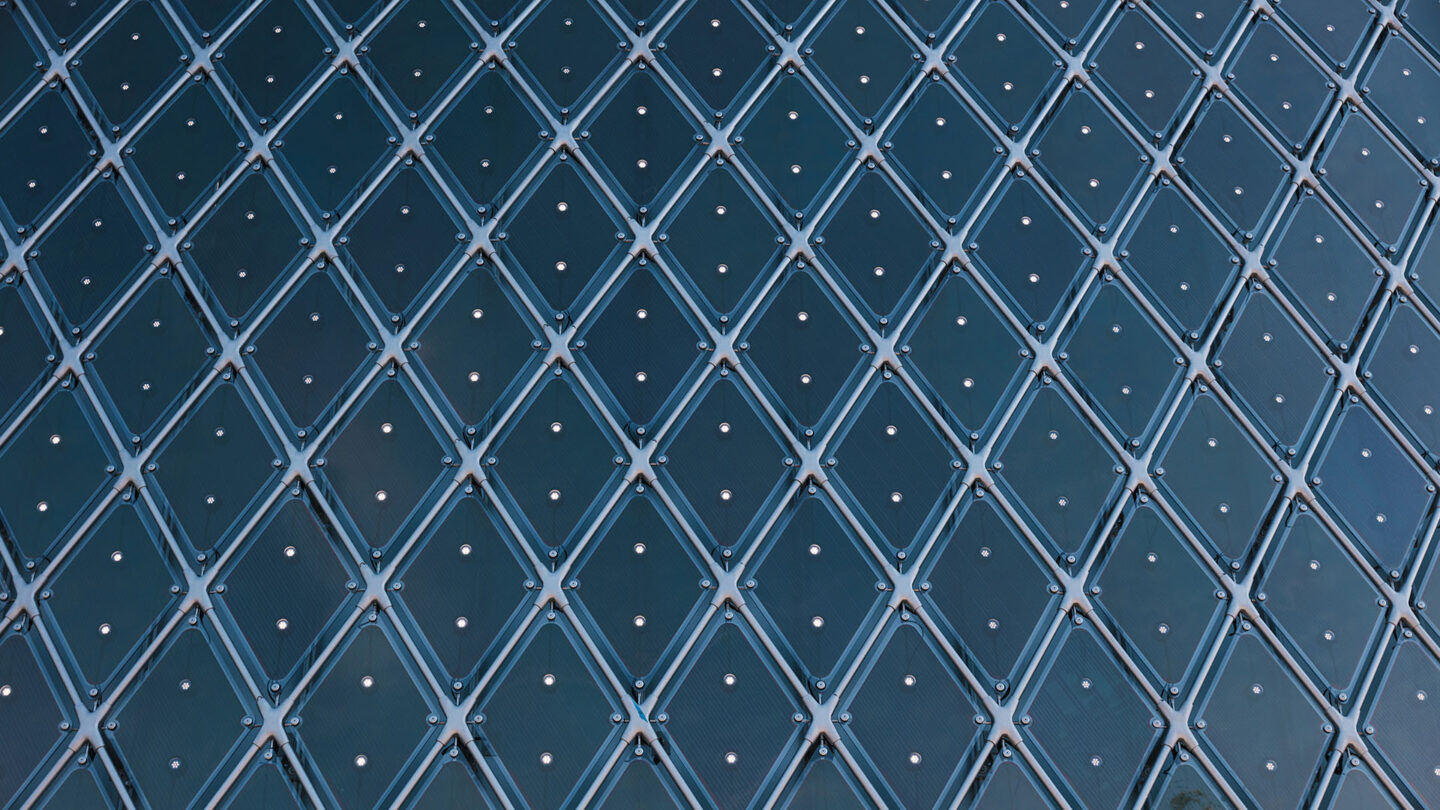
It features a total of 10’000 organic solar modules with 30’000 embedded LEDs.
Laurids Jensen, iart
Project Details
The use of solar to this digital facade experience brings this pavilion to a landmark within the public space. The flowing content is calming and engaging.
The future of design needs to be mindful of making compelling designs and experiences that integrate sustainability. The scale, content, and seamless integration of sustainable energy push the needle on what can be done with a large-scale digital canvas.
This piece pushed the field further in that it took an existing form and made it solar powered and zero energy. We also liked how it was a public piece that the surrounding areas could enjoy.
Design Team
Valentin Spiess (concept development, creative direction and engineering)
Reto Weljatschek (concept development, design and construction)
Michael Stucki (concept development and system engineering)
David Hänggi (concept development and system engineering)
Gesine Gennrich (concept development)
Christian Reimann (project management)
Oliver Hagmann (project management)
Stephan Urech (agile project coach)
Michael Lotz (software engineering)
Erik Eggeling (software engineering)
Ivo Schüssler (software engineering)
Marcel Colomb (software engineering)
Guillaume Massol (software engineering)
Oliver Heyerick (system engineering)
Nicholas Bewick (development of concept and architecture geometry)
Guido Tarantola (development of concept and architecture geometry)
Sabine Himmelsbach (art curation)
Daniel Canogar (artist)
Esther Hunziker (artist)
Ruth Jarman (artist)
Joe Gerhardt (artist)
Collaborators
AMDL CIRCLE (architecture)
Michele De Lucchi (architecture)
Vogt Landschaftsarchitekten (landscape architecture)
ASCA (opv modules)
Daniel Canogar, Esther Hunziker, Semiconductor (digital artworks)
House of Electronic Arts (art curation)
Photo Credits
Laurids Jensen, iart (photography), iart (videography)
Open Date
April 2022
